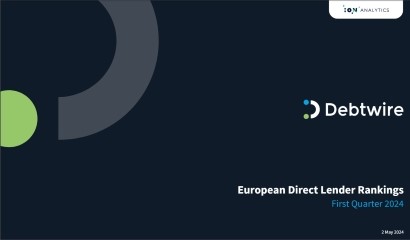Altice France faces strategic decisions on restructuring implementation; in-court proceedings in both France and the US are available options
Altice France’s strategy for deleveraging its balance sheet by designating Altice Media as an unrestricted subsidiary, and thereby keeping €1.55bn in expected sale proceeds out of the restricted assets bucket, triggered a swift market reaction. As creditor groups have reportedly formed and brought on restructuring professionals, the Debtwire legal analyst team explores the company’s in-court restructuring options in both France and the US.
In addition, as further discussed below, given Altice France’s strong ties to France, it is more likely that, if the company were to seek to commence a formal restructuring proceeding, its home country would be the top choice. Nonetheless, a Chapter 11 filing in the US like would remain another option available to the beleaguered telecom giant, particularly given US bankruptcy courts’ long history of overseeing pre-arranged and pre-packaged Chapter 11 cases, as compared to the relatively new reforms to French restructuring law that introduced, in 2021, the concept of classes of affected parties and cross-class cram down, as further discussed below.
Altice France’s complex capital structure and out-of-court restructuring efforts
Headquartered in France, Altice France (together with its subsidiaries, the Group) is a limited liability corporation (société anonyme) formed under French law in August 2013. It is one of the largest groups operating in the telecommunications and media space, according to the company’s consolidated financial statements for FY 2023 (2023 FS). On its website, Altice France boasts that it (i) supports nearly 27 million customers daily with a fiber optic network of 37.1 million eligible sockets, and (ii) was the first operator to launch 5G in France. The company’s website also states that the Group covers 99.9% of the population with 4G. According to the preliminary offering memorandum dated 23 September 2021 for the company’s senior secured notes due 2029 (OM), it is the second largest telecommunications operator and a leading alternative telecommunications operator in France by revenues and number of subscribers, with major positions in all segments of the French telecommunications market, including residential mobile, residential fixed, business services, and media.
As of 31 December 2023, Altice France Holding SA (Altice France Holding) held 100% of Altice France minus one share held by Altice Luxembourg SA (Altice Luxembourg).
According to the OM, the Group holds 305 commercial leases for its stores located throughout France and, as of 31 December 2020, had an average full-time equivalent employee headcount of 36,894 compared to 32,500 as of December 31, 2019 and 21,759 as of December 31, 2018. More recently, according to the 2023 FS, the company’s average annual headcount as of 31 December 2023 was 37,985, up from 35,421 the prior year.
In terms of advisors, with respect to the company’s senior secured notes due 2029, the OM documents list Ropes & Gray International as its English and US counsel, and BCLP LLP, Nabarro Béraud Avocats, and Mayer Brown SELAS as French counsel. The documents also list Holland & Knight as counsel to Deutsche Bank Trust Company Americas, the indenture trustee.
As set forth in the 2023 FS, the company entered into an amend and extend transaction in 2023 and commenced tender offers in 2024. More specifically, in the January 2023 amend and extend transaction, the Group refinanced 75%, or €5.9bn, of its 2025 and 2026 term loan maturities to August 2028. Additionally, Altice France raised €150m of new money and extended its €1bn revolving credit facilities to January 2028. As of 2023 December, according to the 2023 FS, the average maturity for Altice France’s debt capital structure increased to 5.3 years from 4.7 years previously. The following table sets forth the restricted Group members’ capital structure as of 31 December 2023.
As of 31 December 2023, the company’s share capital amounted to €443.7m comprising 443,706,618 shares with a par value of €1 each. In 2021, an exceptional dividend distribution was made at €10.28 per share, for an aggregate amount of €4,559.8 million. The Group has not distributed dividends to its shareholders in subsequent years.
On 3 March 2024, Altice France announced that it commenced offers to purchase for cash its (i) EUR January 2025 Notes and/or (ii) EUR February 2025 Notes, up to an original maximum aggregate principal amount of €215m. On 12 March, the company announced that, at the expiration deadline, a total of €306.6m aggregate principal amount of EUR January 2025 Notes were properly tendered, and a total of €234.6m aggregate principal amount of EUR February 2025 Notes were properly tendered. On 14 March, Altice France purchased an aggregate amount of the notes equal to the amended maximum offer amount of €218.8m, comprising €109.1m of the EUR January 2025 Notes and €109.7m of the EUR February 2025 Notes.
As a further effort to right-size its balance sheet, on 15 March, Altice France announced that it entered into an exclusivity agreement with the CMA CGM Group and Merit France to sell 100% of Altice Media for a total cash consideration of €1.55bn. Although the transaction is subject to conditions precedent and regulatory approvals, the company expects the sale to be completed during the summer of 2024. Before making the announcement, Altice France designated Altice Media as an unrestricted subsidiary under its financing documentation. The Xtract Research team discussed the relevant provisions of the OM and the extent to which this designation was permissible thereunder.
Strategic decisions to be made
As Debtwire reported, the telecom giant’s capital structure took a hit after management announced on its controversial 4Q23 earnings call that it will not contribute proceeds from asset sales back into the restricted group until it is “well below” 4x net levered. In light of the circumstances discussed above, creditors are aligning to strengthen their bargaining positions: a secured creditor group reportedly has been working with Gibson Dunn as legal counsel and a separate group of Altice France bondholders has reportedly hired Houlihan Lokey and Milbank to help engage in discussions with the Group.
The current situation and the complexity of the Group’s capital structure presents a greater challenge in terms of garnering sufficient creditor support for an out-of-court restructuring. As the company is incorporated and headquartered in France, and conducts its operations there, a French in-court restructuring proceeding would be an obvious option to explore, and seems the most likely route given the national significance of the Group and location of operations and assets. A US Chapter 11 case however should not be ruled out, as it likely would be an alternative option to consider.
French toolkit
Altice France may resort to the recently modified French restructuring regime to push through a workout. Under the modernised French system, majority shareholder Drahi’s equity stake could be at risk. While the former French regime was very debtor friendly, changes that came into force in 2021 – implementing the EU Restructuring Directive – rebalanced the interests of stakeholders.
France offers two “amicable” and confidential restructuring proceedings – mandat ad hoc and conciliation. The aim of both procedures is to provide a breathing space for a consensual deal to be reached with some or all creditors under the supervision of the court.
Companies that are distressed, but not yet insolvent (based on the applicable French cash-flow insolvency test) can apply for mandat ad hoc. The role of the mandataire ad hoc (an insolvency practitioner) is to assist the company in devising a restructuring plan. There is no set timeframe for the mandat ad hoc process. On the other hand, a debtor can enter conciliation if it is solvent or insolvent, provided it has been insolvent for not more than 45 days. Conciliation runs for a maximum of four months, with the possibility of one extension of up to a month. Due to the lack of a time limit for the process, mandat ad hoc will often be the first port of call.
Mandat ad hoc can be converted into conciliation and there are various reasons for doing so, in particular so any agreement reached can be formalised and new money given priority in any subsequent proceedings.
Where no consensual agreement is reached in amicable proceedings, a type of sauvegarde (safeguard) proceedings – which have more drastic possibilities for a restructuring plan to be imposed on creditors – may follow, provided the debtor is still not cash flow insolvent, in which case formal reorganisation or liquidation proceedings would follow.
Notably, in France, creditors do not have the right to commence mandat ad hoc, conciliation or safeguard proceedings.
The recent reforms to the French restructuring framework introduced the concept of classes of affected parties and cross-class cram down. Thus, the accelerated safeguard process facilitates the adoption of a plan drawn up during the conciliation that lacks unanimous stakeholder backing, with a threshold of two-thirds in value of participating creditors to vote in favour of a plan for approval.
Under the French regime, cross-class cram down is subject to the absolute priority rule, which could scupper any attempt by Patrick Drahi, the Group’s founder, to cram down creditors while holding on to his equity. The conditions for cram down include:
- approval of the plan by a majority of classes, including a secured class or a class that is senior to the unsecured creditors class; or at least one class, other than an equity class or any other class that, upon a going concern valuation of the debtor, could be reasonably presumed not to be entitled to any payment or retain any interest in liquidation proceedings or in the event of a sale plan in reorganisation or liquidation proceedings;
- compliance with the absolute priority rule; and
- no class may receive or retain in excess of the full amount of its claims.
There is also scope to cram down out of the money equity holders in certain circumstances.
To the extent that Altice France were to commence restructuring or insolvency proceedings in France, the company could, if necessary, enforce the restructuring in the US by obtaining recognition of the French proceedings under Chapter 15 of the US Bankruptcy Code. Based on UNCITRAL’s Model Law on Cross-Border Insolvency, Chapter 15 authorizes US bankruptcy courts to recognize restructuring and insolvency proceedings that are pending either (i) where a foreign company maintains in center of main interests as a foreign main proceeding, or (ii) where a foreign company carries out non-transitory economic activity. Thus, it is likely that any French restructuring would be eligible for recognition as a foreign main proceeding under Chapter 15. According to data available in Debtwire’s Restructuring Database (RDB), the following French companies have turned to Chapter 15 for such relief.
Options under Chapter 11 in the US
Instead of commencing a restructuring proceeding in France and seeking recognition of that proceeding in the US under Chapter 15, Altice France would also have the option to commence a Chapter 11 case in the US. Under section 109(a) of the Bankruptcy Code, any company (with limited exceptions, such as railroads, banks and insurance companies) may obtain relief under Chapter 11 so long as it resides or has a domicile, place of business, or property in the US. Bankruptcy courts often find that foreign corporations satisfy this requirement when companies have property, however de minimis, in the US. For example, this eligibility requirement has been satisfied by having a few thousand dollars in a bank account and unearned portions of retainers provided to local counsel.[1] Put bluntly by the US Bankruptcy Court for the Southern District of Texas in the Chapter 11 case of Yukos Oil Company, which was organized under the laws of the Russian Federation, “[t]he courts have noted that there is virtually no formal barrier to having federal courts adjudicate foreign debtors’ bankruptcy proceedings.”[2] According to the RDB the following foreign companies have sought relief under Chapter 11 since January 2022.[3]
In total, 137 such foreign companies (not counting their affiliates) have commenced Chapter 11 cases since 2016, according to data available in the RDB. As is apparent from the table above, no French company is listed among the recent Chapter 11 filers. According to the RDB, however, the following French companies have sought relief under Chapter 11.
Because the Group’s notes are governed by New York law and disputes may arise concerning the designation of Altice Media as an unrestricted subsidiary, it would seem logical that if the Group pursued a Chapter 11 strategy, the case would be commenced in the Southern District of New York. Realistically, the Group arguably could choose any venue it deems preferable. As Judge Christopher Lopez of the US Bankruptcy Court for the Southern District of Texas ruled in the case of Sorrento Therapeutics on 11 March 2024, setting up a post office (PO) box one day before a bankruptcy filing to manufacture venue in the Southern District of Texas was not problematic (particularly because the issue was not raised until after the debtor’s plan was confirmed). Judge Lopez explained that even though the request to transfer venue (ie – objection to the venue choice) was ultimately untimely, opening the PO box and bank account in the days leading up to the bankruptcy filing did not warrant sanctions, as doing so is not new or unique in that judicial district. As noted in the tables above, the Southern Districts of New York and Texas appear to be the most popular venues for foreign debtors. Although the extent to which Altice France has assets within the US remains unclear, this element likely would not be an impediment to eligibility given the minimal holdings required, as discussed above.
Ideally, if Altice France were to look to Chapter 11 as an option, it would enter bankruptcy with an agreement with sufficient majorities of its creditors (ie – a restructuring support agreement) to allow for a consensual plan confirmation process. This typically reduces the stay in Chapter 11 and the professional fees incurred through the process. Also, US bankruptcy court judges regularly facilitate expedited hearings for debtors that enter Chapter 11 with pre-packaged[4] plans of reorganization. Moreover, restructuring support agreements, pursuant to which creditor groups agree to vote in favor of an agreed-upon plan, often contain milestones to help ensure that the Chapter 11 case moves swiftly.
Failing the ability to get a sufficient creditor consensus prior to a bankruptcy filing, Chapter 11 offers the ability to bind hold-out creditors by cramming down non-consenting creditor classes. However, like under French law, a cram-down scenario would not allow Drahi or other shareholders to retain their equity, as the Bankruptcy Code requires that special protections be afforded to crammed-down creditors.
Speaking more broadly, a class accepts a Chapter plan if holders of two-thirds in amount and over half in number vote to accept. As noted above, if Altice France could reach an agreement with holders of this amount of debt in each instrument class, a pre-arranged or pre-packaged Chapter 11 process typically would be preferable. However, a Chapter 11 plan can be confirmed even if an impaired[5] creditor class that is entitled to vote rejects the plan. Under such a cram-down scenario, at least one impaired class must vote to accept the plan and certain additional requirements must be met with respect to the rejecting class. Specifically, the plan does not discriminate unfairly and be fair and equitable to the crammed down classes.
For a plan to be fair and equitable to unsecured creditors, it must comply with the “absolute priority rule,” meaning that it may not provide a distribution to a junior creditor before each senior crammed-down class of creditors is paid in full. In practice, this typically ensures that shareholders do not receive a recovery unless unsecured creditors are unimpaired or vote to accept the plan. The plan also must provide that creditors within an impaired class that do not vote to accept the plan receive distributions that are not less than the amount that such creditors would have received if the debtor were to be liquidated under Chapter 7 of the US Bankruptcy Code.
As for secured creditors, on the other hand, a plan is fair and equitable if such creditors (i) retain the liens securing their claims to the extent of the allowed amount of such claims, and (ii) receive deferred cash payments totaling at least the allowed amount of such claim, of a value, as of the effective date of the plan, of such creditor’s interest in the estate’s interest in such property. Alternatively, the plan may provide secured crammed-down creditors with the “indubitable equivalent” of their claims. Although creditor groups have formed, as discussed above, the progress of negotiations among the groups has not yet yielded any reported restructuring agreements, and therefore it is unclear at this point whether a cram-down under either a US or French proceeding would be required.[6]
Weighing the options
French companies have traditionally favoured French processes, so while the modernised French system is much less favourable to shareholders, who no longer hold a veto right and could be subject to cram down, the French system seems to offer the most likely route, especially given the costs attached to a Chapter 11 bankruptcy filing, which could be reduced in the event of a pre-arranged or pre-packaged filing. As Debtwire reported on 18 April, a group of holders of Altice’s secured bonds that have been working with law firm Gibson Dunn and financial advisor Rothschild have entered into a cooperation agreement, which appears to be one of the first such American-style creditor cooperation agreements to emerge in Europe. The group reportedly holds USD 15bn in mostly secured debt, and the cooperation agreement will remain in effect for six months. If the group reaches a deal with Altice on a debt restructuring that includes secured and unsecured debt (as noted above – a portion of the USD 15bn is unsecured debt), such agreement could yield a restructuring support agreement between the parties, giving Altice an option to pursue an in-court pre-arranged Chapter 11 case, which theoretically would reduce the costs of a Chapter 11 case and potentially the time in Chapter 11. This would factor in favor of a Chapter 11 case given US bankruptcy courts’ extensive experience in administering pre-arranged and pre-packaged cases.
The systemic importance of Altice in France and the location of its assets and operations, however, would factor in favor the commencement of an in-court restructuring in France over the US.
Indeed, several high-profile French names, including Pierre et Vacances, Casino and Orpea – which was the first major French cross-class cram down – have utilised the modernised French process and Altice could follow in their footsteps.
While Chapter 11 would allow the Group to accomplish a restructuring over the objection of certain holders of its funded debt under a cram-down scenario, as discussed above, such a restructuring would not allow current shareholders to retain their equity, which may not be an attractive option to current shareholders that are involved in the decision-making process.
Moreover, to the extent that the value of the collateral securing the claims of any of the Group’s holders of funded debt is less than the secured claim amounts, those creditors would hold unsecured deficiency claims in a Chapter 11 case. Such under-secured creditors arguably should not receive a distribution on their deficiency claims that exceeds distributions given to other unsecured creditors in a Chapter 11 case. Although the extent to which the collateral value ties to the secured debt amount it is unclear at this point, if any portions of the secured funded debt claims are under-secured, this could prove to be a leverage point for unsecured creditors under a Chapter 11 scenario.
Any opinion, analysis or information provided in this article is not intended, nor should be construed, as legal advice, including, but not limited to, investment advice as defined by the Investment Company Act of 1940. Debtwire does not provide any legal advice and subscribers should consult with their own legal counsel for matters requiring legal advice.
We have obtained the information provided in this report in good faith from sources that we consider to be reliable, but we do not independently verify the information. The information is not intended to provide tax, legal or investment advice. We shall not be liable for any mistakes, errors, inaccuracies or omissions in, or incompleteness of, any information contained in this report. All such liability is excluded to the fullest extent permitted by law.
[1] See In re Aerovias Nacionales De Colombia S.A. Avianca, 303 B.R. 1, 8 (Bankr. S.D.N.Y. 2003).
[2] Yukos Oil Company v. Russian Federation (In re Yukos Oil Company), 320 B.R. 130, 132 (Bankr. S.D. Texas 2004).
[3] The RDB tracks Chapter 11 and other cases that have been filed for bankruptcy since 2016 and have at least USD 10m in funded debt, subject to certain exceptions. For example, the RDB also tracks significant Chapter 11 filings of debtors with no funded debt, such as Purdue Pharma.
[4] A pre-packaged Chapter 11 plan is a plan that has received the requisite amount of creditor votes prior to the commencement of the bankruptcy case. A pre-arranged Chapter 11 filing, on the other hand, refers to the commencement of a Chapter 11 case by a debtor that has entered into a restructuring support agreement, but has not yet obtained the requisite votes on a plan.
[5] Pursuant to section 1124 of the US Bankruptcy Code, a class of claims or interests is impaired under a plan unless the plan “leaves unaltered the legal, equitable, and contractual rights to which such claim or interest entitles the holder of such claim or interest” or, notwithstanding any contractual provision or applicable law that entitles a creditor to receive accelerated payment of such claim or interest after the occurrence of a default, (i) cures certain prepetition defaults, (ii) reinstates the maturity as it existed before the default, (iii) compensates the creditor for any damages incurred as a result of any reasonable reliance on such contractual provision or such applicable law, (iv) if such claim arises from any failure to perform a nonmonetary obligation, other than a default arising from failure to operate a nonresidential real property lease subject to section 365(b)(1)(A) of the Bankruptcy Code, compensates the creditor (other than the debtor or an insider) for any actual pecuniary loss incurred as a result of such failure, and (v) does not otherwise alter the legal, equitable, or contractual rights to which such claim or interest entitles the holder of such claim or interest.
[6] In 2018, for example, in the case of Breitburn Energy Partners, Judge Stuart Bernstein of the US Bankruptcy Court for the Southern District of New York ruled that a plan unfairly discriminated against a class of unsecured bondholders. Specifically, Judge Bernstein found that the plan unfairly discriminated against bondholders in Class 5B when compared to other unsecured creditor recoveries. In that case, the plan provided recoveries to four classes of unsecured claims as follows: (i) Class 5A, (eligible offerees that participate in the rights offering), were set to receive an approximate 11.94% dividend, (ii) Class 5B was slated for an approximate 4.5% dividend; (iii) Class 6, (other general unsecured creditors), would receive approximately 7%; and (iv) Classes 7A and 7B, (certain unidentified ongoing creditors), were set to receive 100% of their allowed claims. Judge Bernstein found that the discrimination was unfair because the debtors failed to show why it was reasonable or necessary to pay Class 5B so much less percentagewise than Class 5A or Class 7, and less than Class 6. See In re Breitburn Energy Partners, 582 B.R. 321 (Bankr. S.D.N.Y. 2018).















